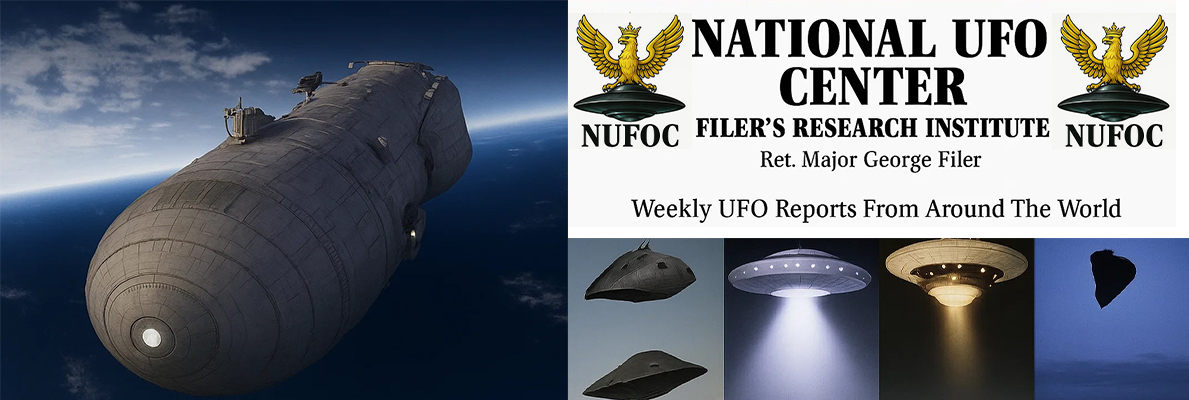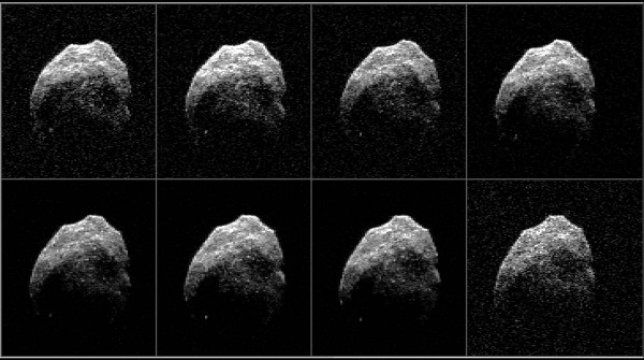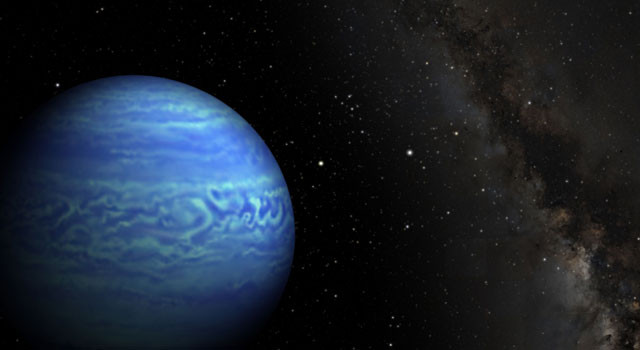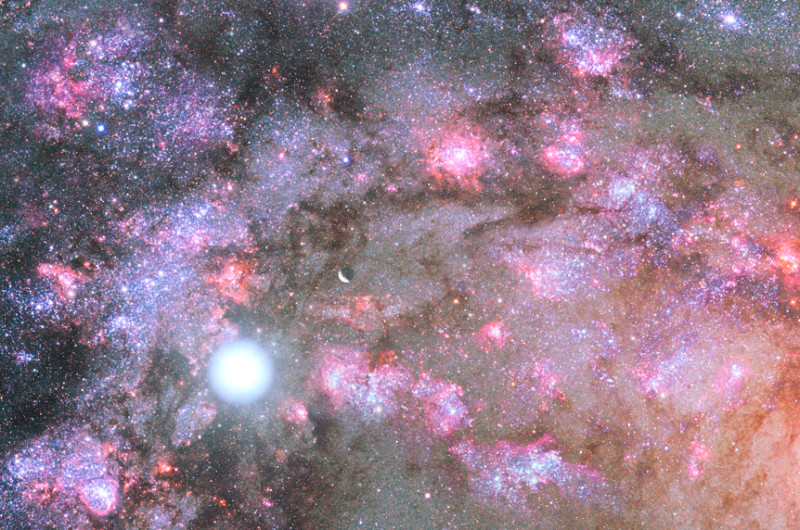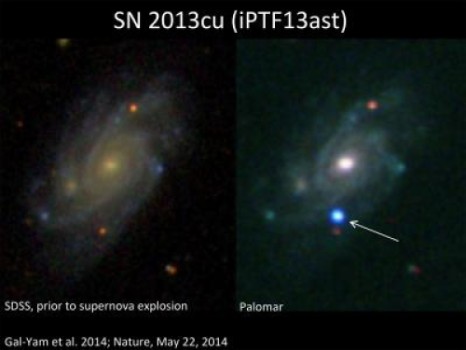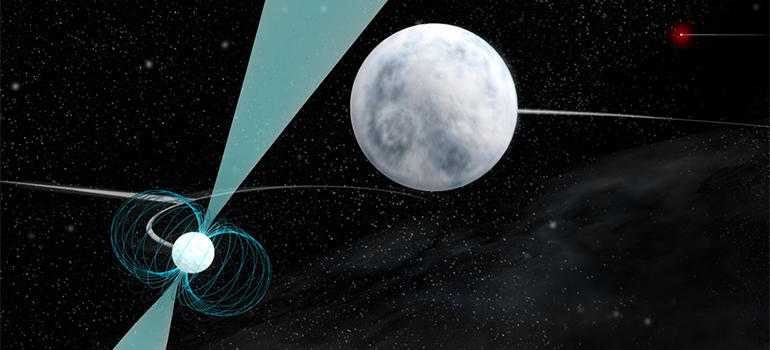
A newly discovered system of two white dwarf stars and a superdense pulsar-all packed within a space smaller than the Earth’s orbit around the sun-is enabling astronomers to probe a range of cosmic mysteries, including the very nature of gravity itself.
The international team, which includes UBC astronomer Ingrid Stairs, reports their findings in the journal Nature on January 5.
Originally uncovered by an American graduate student using the National Science Foundation’s Green Bank Telescope, the pulsar — 4,200 light-years from Earth, spinning nearly 366 times per second — was found to be in close orbit with a white dwarf star and the pair is in orbit with another, more distant white dwarf.
The three-body system is scientists’ best opportunity yet to discover a violation of a key concept in Albert Einstein’s theory of General Relativity: the strong equivalence principle, which states that the effect of gravity on a body does not depend on the nature or internal structure of that body.
“By doing very high-precision timing of the pulses coming from the pulsar, we can test for such a deviation from the strong equivalence principle at a sensitivity several orders of magnitude greater than ever before available,” says Stairs, with UBC’s Department of Physics and Astronomy. “Finding a deviation from the strong equivalence principle would indicate a breakdown of General Relativity and would point us toward a new, revised theory of gravity.”
“This is the first millisecond pulsar found in such a system, and we immediately recognized that it provides us a tremendous opportunity to study the effects and nature of gravity,” says Scott Ransom of the National Radio Astronomy Observatory (NRAO), who led the study. “This triple system gives us a natural cosmic laboratory far better than anything found before for learning exactly how such three-body systems work and potentially for detecting problems with General Relativity that physicists expect to see under extreme conditions.”
Background
When a massive star explodes as a supernova and its remains collapse into a superdense neutron star, some of its mass is converted into gravitational binding energy that holds the dense star together. The strong equivalence principle says that this binding energy will still react gravitationally as if it were mass. Virtually all alternatives to General Relativity hold that it will not.
Under the strong equivalence principle, the gravitational effect of the outer white dwarf would be identical for both the inner white dwarf and the neutron star. If the strong equivalence principle is invalid under the conditions in this system, the outer star’s gravitational effect on the inner white dwarf and the neutron star would be slightly different and the high-precision pulsar timing observations could easily show that.
“We have made some of the most accurate measurements of masses in astrophysics,” says Anne Archibald of the Netherlands Institute for Radio Astronomy and one of the authors of the study. “Some of our measurements of the relative positions of the stars in the system are accurate to hundreds of meters.” Archibald led the effort to use the measurements to build a computer simulation of the system that can predict its motions.
The NRAO’s Scott Ransom adds: “This is a fascinating system in many ways, including what must have been a completely crazy formation history, and we have much work to do to fully understand it.”
The scientists’ observational program used the National Science Foundation’s Green Bank Telescope, the Arecibo radio telescope in Puerto Rico, and the Westerbork Synthesis Radio Telescope in the Netherlands. They also studied the system using data from the Sloan Digital Sky Survey, the GALEX satellite, the WIYN telescope on Kitt Peak, Arizona, and the Spitzer Space Telescope.
